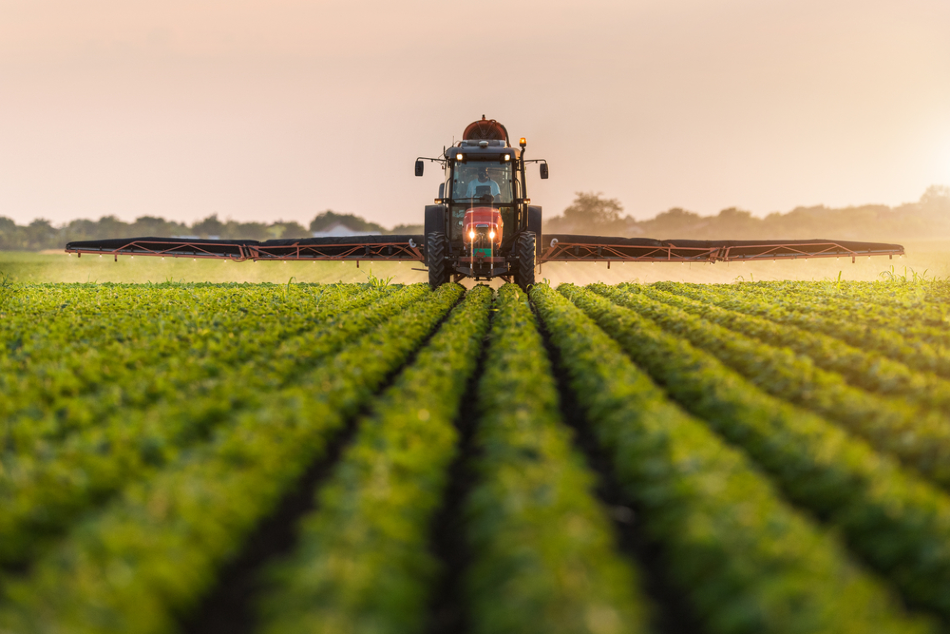
Image Credit: Fotokostic/Shutterstock.com
Nanotechnology has infiltrated its way into many industries, making significant improvements along the way. However, the agricultural sector has yet to reap the rewards nanotechnology has to offer.
Nanotechnology is one of six ‘Key Enabling Technologies’ identified by the European Commission that could contribute to sustainable competitiveness and growth in several industries. Researchers are exploring how nanotechnology could - as a source of critical improvements for agriculture - help solve the challenges of sustainability, food security and climate change. However, no concrete progress has been made.
Why Agriculture Needs Nanotechnology
The agricultural sector has benefitted from many technological innovations over the years – machinery, hybrid varieties, synthetic chemistry and biotechnology - and this transformation needs to continue to address food security and climate change challenges.
When materials reach the nanoscale, new chemical and/or physical properties of materials become apparent. These properties provide a useful function and are already being exploited in medicine, biotechnology, materials science and within the energy sector. They could also be utilized in the agricultural sector to improve sustainability, enhance the variety of crops, as well as increase productivity, disease management and crop protection.
Nanofertilizers
Nanotechnology’s ambition for the agricultural sector is to decrease the number of chemicals lost during spreading or spraying of products such as pesticides and fertilizers, minimize nutrient losses in fertilization, and increase the yield through pest and nutrient management.
Read more: Uses of Nanotechnology in Fertilizers
Conventional fertilizers may be harmful to humans and the environment, prompting research into environmental alternatives, and nanotechnology is promising. Nanofertilizers consist of nanostructured formulations – nano zinc, silica, iron, titanium oxide amongst others - that can be delivered to the plants, allowing for efficient uptake or slow release of active ingredients.
The properties of nanoparticles - high surface area/volume size ratio and enhanced optoelectronic and physicochemical properties – could provide a promising strategy to promote plant growth and productivity, by influencing metabolic activities of the plant to different degrees compared to conventional materials.
Nanopesticides
Nanopesticides are especially underexplored. Nano-encapsulated pesticides with slow-releasing properties, enhanced solubility, specificity, permeability and stability could minimize nutrient losses in fertilization, with the dual benefit of increasing yield via optimized water and nutrient management.
This can be achieved by protecting the encapsulated active ingredients from early degradation or increasing the pest control efficacy for longer. Such smart delivery systems can reduce both the dosage of pesticides and the level of human exposure.
Breeding and genetic transformation
Over the years, agriculture has been exposed to selective breeding and genetic manipulation to ensure the healthiest crops. This would have started somewhat crudely – by merely retaining the best seeds to grow the following year – before manipulating plants to show the desired traits.
Nanotech-derived devices are being explored for plant breeding and genetic transformation. Surface-functionalized silica nanoparticles can be utilized to carry DNA and drugs into animal cells and tissues, and they show potential in transporting DNA and chemicals into isolated plant cells and intact leaves.
Monitoring in the Field
Nanotechnology may also be applied in sensors to monitor the plant and soil health, or the quality of water, and, therefore, maintain the health of agricultural crops. Nanotechnology-based biosensors are still in the early stage of development but could be employed for sensing a wide variety of fertilizers, herbicides, pesticides, insecticides, pathogens, moisture, and soil pH.
Read more: Software for Metrology, Mapping & Nanoanalysis
Making it to Market
Despite the many advantages and a growing trend in publication and patents, there are very few applications of nanotechnology within the agricultural sector.
Patent applications from agrochemical companies are growing, but no new products are reaching the market. This suggests applicants are enthusiastically patenting but keeping claims broad to guarantee future freedom to function and to ensure future exploitation if commercially promising.
Nanotechnology has a high initial production investment, and so the technology currently does not demonstrate a sufficient return on investment. This high initial cost can only be balanced with large-scale field uses.
Another factor could be new nanotechnology regulations causing uncertainty for products already on the market, particularly those engineered with nanoparticles, verses those that contain them by nature. The definition of nanomaterials is not as straightforward as describing it by size; many countries have different classifications and regulatory frameworks, highlighting the need for an internationally harmonized definition and regulations.
It is interesting to note that public opinion is in favor of employing nanotechnology in agriculture. There has been rapid progress in other key industries, and products with clear benefits have been accepted by consumers. The hope is that the knowledge gained in these areas can spill over into agricultural applications and be taken similarly.
Conclusion
Novel and innovative agro-nanotechnology products are struggling to reach the market. Factors include the high manufacturing costs of products that are required in very large volumes, the unclear technological benefits and regulatory uncertainty.
However, the research and development landscape looks promising, with several agricultural applications being actively explored.
References and Further Reading
Parisi C et al. (2015) Agricultural Nanotechnologies: What are the current possibilities? Nanotoday. https://doi.org/10.1016/j.nantod.2014.09.009 (Accessed 17 July 2020).
Prasad R et al (2017) Nanotechnology in Sustainable Agriculture: Recent Developments, Challenges, and Perspectives, Microbiology. https://doi.org/10.3389/fmicb.2017.01014 (Accessed 17 July 2020).
Torney F et al (2007) Mesoporous silica nanoparticles deliver DNA and chemicals into plants, Nature Nanotechnology. https://doi.org/10.1038/nnano.2007.108 (Accessed 17 July 2020).
Usman M et al (2020) Nanotechnology in agriculture: Current status, challenges and future opportunities, Science of The Total Environment. https://doi.org/10.1016/j.scitotenv.2020.137778 (Accessed 17 July 2020).
Dextra International. Use of nanofertilizers in agriculture: advantages and safety concerns. [Online] Available at: http://www.dextrainternational.com/use-of-nanofertilizers-in-agriculture-advantages-and-safety-concerns/ (Accessed 17 July 2020).
Disclaimer: The views expressed here are those of the author expressed in their private capacity and do not necessarily represent the views of AZoM.com Limited T/A AZoNetwork the owner and operator of this website. This disclaimer forms part of the Terms and conditions of use of this website.